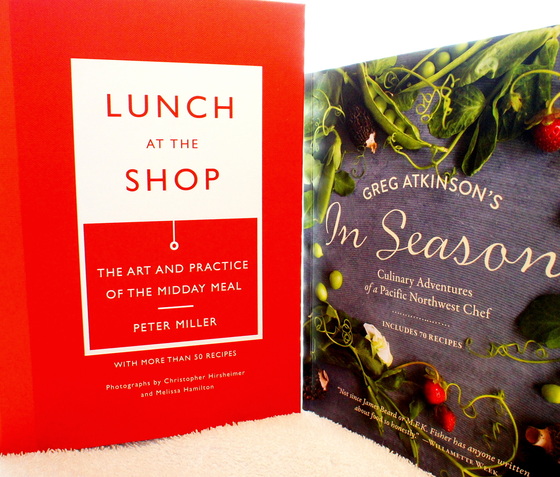A couple of new books this week prompt their readers to view lunch and dinner in new ways.
First comes the bookseller Peter Miller, whose professional specialty is architecture and design, and whose frequent contributions to Crosscut have often centered on the game of soccer. A couple of years ago Miller proposed to Harry Abrams, the publisher of high-quality art books, a modest volume about lunch, which arrived on the shelves this week. Miller's lunch is not the business man's bar & grill excuse for a three-martini descent into debauchery, nor even a white-tablecloth detour to dissolution. Rather, it is an interlude of civilization. "We are all busy," Miller acknowledges, setting the premise that lunch is not a full orchestra but a half-hour rehearsal.
It helps that Miller has his own business, a shop that for decades stood on First Avenue opposite Le Pichet, where he and I would cross paths now and then. (He recently moved into the offices of Sugiyama architects in Belltown.) The story begins in Italy, as do so many bits of Seattle history (Starbucks, for example), specifically in Milan, where Miller, decades ago, was attending a design meeting. At 12:30, the client put down her drafting pencil, pulled down the shades, and went into the back of the office with an assistant to prepare the midday meal: fresh bread, tomatoes, cheese, a salad, some cold white wine. "I decided then that I would shut my bookshop at 12:30 every workday and have lunch. I would consider it a great honor, and a great lesson."
So lunch becomes a ceremony, as much about ritual as about content. (You can watch Miller fix a meal on YouTube.) The content comes from anywhere and everywhere: "stray bits" left over from the preparation of dinner (though not actual "leftovers"): bits of pasta, parsley, gravy. Lentils, beans, rice. Tuna, chicken, spinach, apples, cheese. Meatballs, too. "Meatballs love company," Miller writes, company in the form of a sandwich, or in a salad. Supermarket meat grinders, well, you don't know what else has gone through there before your package, they make everything look like hamburger, so buy ground meat from a butcher. Use good herbs. Sit down and share your lunch with three or four colleagues. Talk about life outside the office. You finish these pages inspired to give up your depressing brown-bag lifestyle and act more like Peter Miller. Not many books can say that.
Greg Atkinson began his culinary career as a dishwasher in the college cafeteria, and quickly worked his way up to chef. He also wrote a column for the Journal of San Juan Island, and originally published "In Season," his first book of recipes and essays in 1997, when the concept of a culinary memoir was pretty much unknown. Atkinson won the Distinguished Writing Aware from the James Beard Foundation in 2001, and today, of course, personal essays are a component of most good food writing.
From the San Juans, Atkinson was summoned to Seattle, where he spent seven years as executive chef at Canlis, then transitioned smoothly into a teaching job at Seattle Community College and, last year, finally opened his own place, Marché, on Bainbridge Island. There's a fascinating, three-part, behind-the-scenes account of what that entailed on FoodArts.com, starting here.
Meantime, Sasquatch Books has reissued "In Season," replete with familiar recipes: risotto, roast chicken, strawberry sorbet. In spring, there is lamb, there are spot prawns; in summer, you pick berries and roast a whole salmon; in fall, you hunt for chanterelles and pick apples; in winter, there are oysters galore.
"In the woods, finding mushrooms, my very soul is refreshed," writes Atkinson. His style is lyrical and inviting; the recipes have the familiar sense of place, of family, of comforting smells, of light. Reading the book, you feel as if you're sitting in a pool of sunshine, waiting for dinner to come out of the oven.

Leave a comment